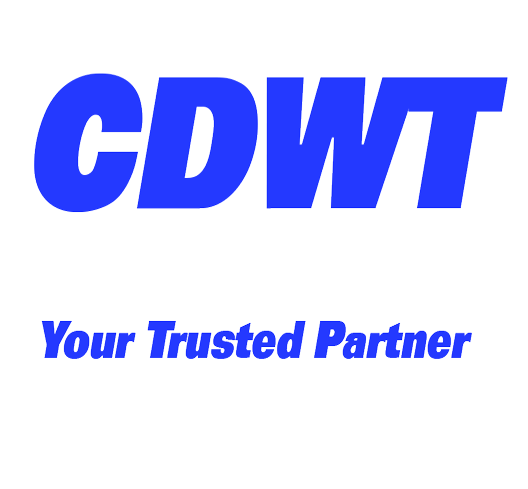AWS Cost Optimization – The 2022 Updated Guide to Optimizing AWS Cloud Costs
In a recent blog post, we addressed in detail what cloud cost optimization means for contemporary businesses, as well as the eight best strategies for optimizing costs across the broad, diverse, and more complicated public cloud environments. In subsequent blogs, we will go further into each of the top public cloud computing platforms and examine the tools, approaches, tactics, and best practices for optimizing cloud expenditures.
Amazon Web Services is presently serving more than 34.2% of worldwide organizations and is dominating the $200 billion global cloud computing industry (AWS).
What is AWS cost management?
Amazon Web Services’ adaptability, scalability, and feature-rich tools and applications have gained the market’s confidence. AWS provides businesses a variety of workloads, including data processing, game creation, and warehousing, along with exceptional service and support. Additionally, its mobile-friendly access allows enterprises to manage or monitor their AWS environment via Amazon Web Services Mobile Hub directly from a mobile device.
Add to that the serverless functions; different databases for different operations; highly scalable, flexible, and cost-effective storage options; and the robust security and compliance for the EC2 instances, and AWS cloud is a popular choice among global enterprises including Airbnb, Pfizer, NASA, BMW, McDonald’s, Netflix, and SAP.
With so many big, medium, and small organizations migrating to the Amazon Cloud, understanding the AWS bill and reducing expenses has become a top priority. Having a cloud architecture that is optimized for cost helps enterprises to reap its advantages. Several firms are finding it difficult to capture the actual benefit of AWS services due to obstacles such as wasted cloud resources, billing complexity, inappropriate architectural design, lack of accountability, unpredictable variable cloud charges, and unclear pricing rules.
AWS has established a collection of practises and principles to help commercial organizations to reclaim control of their AWS costs and optimize their cloud spending. AWS cost optimization, one of the core pillars of AWS cost management, facilitates the selection of cost-optimized resources and gives advice for various pricing models in order to achieve performance and cost efficiency and minimise AWS expenses.
Why optimise AWS costs?
We have aided several big and medium-sized businesses in optimising their AWS costs. Throughout these interactions throughout the years, we have typically encountered five primary obstacles that motivate businesses to explore cost minimization. Examine each of the difficulties.
1. Oversizing
Oversizing AWS resources, which causes AWS costs to skyrocket, is the simplest and easiest problem to fix. Multiple circumstances may result in oversizing, with the majority stemming from an improper design approach. Here are some frequent and probable scenarios:
- Headroom is a buffer of extra capacity for dynamic scaling that ensures a cluster is available 24×7 to meet quick scaling demands. Imagine you have sufficient headroom. Still, someone on the development team adds extra on-demand instances, either by accident or ignorance. According to the AWS pricing model, on-demand instances are more costly than reserved and spot instances. Consequently, the additional capacity ends up increasing the cost, although needlessly.
- What happens when an AWS user fails to test and evaluate the network performance of an application correctly? Measuring the performance of production workloads, such as throughput, connection latency, network jitter, and packet loss, may be very difficult if inaccurate testing are conducted. As a consequence, one purchases more resources than are necessary.
- Predicting failure is another frequent cause of oversizing. While precise forecasting assists in minimizing the trade-offs between over- and under-sizing expenses, over-forecasting might result in the addition of a large number of instances to satisfy the forecasted demand value and expected economic results.
This dilemma arises when teams discover a permanent solution to a transitory problem, i.e., commissioning surplus instance capacity to compensate for any existing software constraints.
2. Inelasticity
Autoscaling is one of the most prominent selling points of the hyperscaler AWS, however applications, databases, or caches that are sluggish to warm up or inefficient do not autoscale instantaneously. Consider a case as an example. Your systems automatically scale to 50% CPU use, as is customary. One inelastic application may cost $1,000,000 per year.


3. Ineffective software
Software efficiency, or lack thereof, is seen as a determining element in reducing cloud expenses. Efficiency is the quantity of resources required per transaction by a firm. This crucial lever is especially significant for organizations with high-volume systems. So why is software inefficient? According to our past experience, the four most important causes are:
- Not accurately estimating software performance
- Not having a standard for effective software
- Not establishing efficiency goals
- Not putting efficiency first
By optimising software and deploying efficient software, however, one may save millions of dollars annually.
4. Intricate Forecasting
In point no. 1, we examined briefly what occurs when forecasts are inaccurate. However, this is hardly the only forecasting difficulty organizations face. AWS budget planning is another important factor for firms to optimise their AWS costs. AWS budget projections are based on a) new services, b) changes in demand for current services, and c) improvements in software efficiency. Now, this forecasting may be a hard endeavor, as it requires a deliberate methodology, the appropriate talents, and data. Additionally, the supply-side modelling is made more difficult by the various AWS pricing structures.
5. Inadequate AWS Architecture
Teams often migrate their old architecture to the cloud without properly optimising it. This inferior design results in increased expenditures. Therefore, it is essential to choose the architecture that best meets your unique workload model.
Upon overcoming these obstacles with AWS cost optimization, you instantly prepare the road for a fully optimized, appropriately scaled, elastic, and highly efficient AWS cloud.
10 best methods to reduce AWS expenses
It is now time to go into some of the finest techniques for optimising your AWS services and reducing the total cost budget.
- As noted in the cost optimization pillars, rightsizing EC2 instances is a crucial step in achieving your AWS savings objectives. Always match instances to workloads or shift workloads to instances with alternative purposes.
- Schedule on/off times for all non-production instances over weekends and non-standard hours to save up to 65% on cloud expenditures.
- Whenever feasible, purchase the appropriate sort of RIs and adopt good cloud financial management procedures to monitor their use throughout the lifecycle of RIs.
- Eliminate any elastic load balancers that are not in use, since they contribute significantly to your monthly AWS fee.
- Always ensure that your EC2 instances are up-to-date and of the most recent generation in order to enhance performance, functionality, and business consequences.
- Terminate useless or zombie assets like disconnected EBS volumes, old snapshots, unused elastic load balancers, etc., some of which are notoriously difficult to locate.
- Move seldom accessed data to low-cost tiers.
- Utilize cost-cutting measures to save money on AWS Faregate and other workloads.
- As spot instances provide up to 90% reductions compared to on-demand pricing, running your workloads and applications on spot instances will result in instant cost savings.
- Utilize the AWS resource optimization report to periodically monitor idle or underutilized resources.


